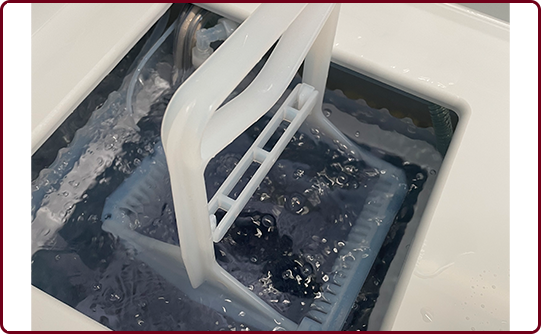- Home
- About Us
- Products
- Applications
- Support
- Blog
- Home
- About Us
- Products
- Applications
- Support
- Blog
Ozone Cleaning Process
Ozone Process Applications for Strip or Clean
OZa or OZFa Series Baths
Modutek’s Ozone processing, also called ozone cleaning or strip, is a process commonly used in the semiconductor industry for surface cleaning/preparation and strip. Ozone (O3) is a highly reactive form of oxygen that can be produced with specialized equipment. Its powerful oxidizing properties enable it to effectively remove organic and inorganic contaminants from surfaces, including semiconductor wafers and other related components. Modutek can incorporate an Ozone line of equipment into your new wet Process station. The Ozone system we design and build is based on
your process requirements, and over time, will reduce your operating costs.
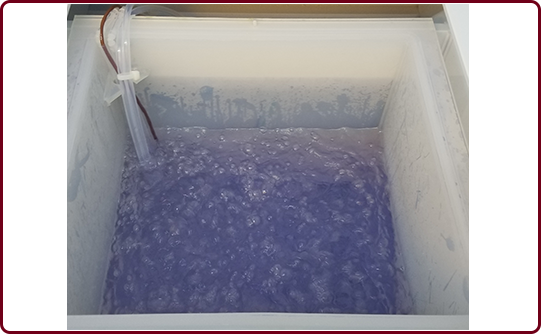
Modutek’s Ozone processing, also called ozone cleaning or strip, is a process commonly used in the semiconductor industry for surface cleaning/preparation and strip. Ozone (O3) is a highly reactive form of oxygen that can be produced with specialized equipment. Its powerful oxidizing properties enable it to effectively remove organic and inorganic contaminants from surfaces, including semiconductor wafers and other related components. Modutek can incorporate an Ozone line of equipment into your new wet
Process station. The Ozone system we design and build is based on
your process requirements, and over time, will reduce your operating costs.

Modutek’s acid fume scrubbers work by exposing contaminated air to a chemical solution. The acid in the air dissolves in the solution and is neutralized. Exposing the acid fumes to as large a surface area of neutralizing solution as possible is the key to an efficient operation. In Modutek’s fume scrubber design, the fumes pass over a wet packed bed. The packing material is made by industry leader Lantec and has an extremely high surface area. The packing material surfaces are covered by the neutralizing solution resulting in a removal rate for the fume chemicals that can reach 99 percent.
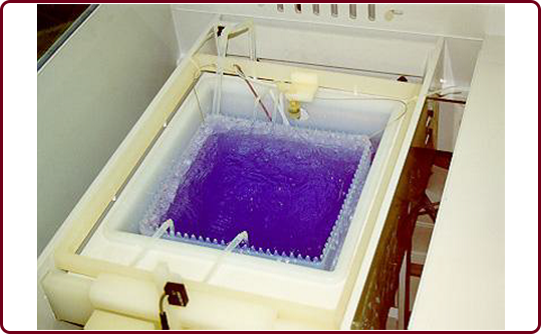
Key Aspects of Ozone Processing in the Semiconductor Industry
Generation: Ozone can be created using an ozone generator and passing high-purity oxygen gas through it and using electrical discharge to convert O2 molecules to O3.
Surface Cleaning: Ozone processing can be utilized to effectively clear semiconductor surfaces of various contaminants. It effectively eliminates organic residues such as photoresists, polymers, and oils, as well as inorganic contaminants like metal oxides and particles. When ozone reacts with these substances, it breaks them down into volatile byproducts that are easily removed.
Ozone Cleaning Systems: Ozone processing can be performed using specialized equipment called “ozone cleaning systems.” These systems typically consist of an ozone generator, gas delivery system, and reaction chamber, which houses the components being cleaned while sealed to prevent ozone leakage.
Process Control: Ozone processing parameters such as concentration, exposure time, and temperature are meticulously managed to optimize cleaning performance while protecting semiconductor components from damage. Monitoring and control systems are utilized to guarantee reliable cleaning results over time.
Advantages: Ozone processing offers numerous benefits for the semiconductor industry. As a dry-cleaning technique, ozone can replace wet chemical cleaners while simultaneously decreasing water consumption. Ozone gas has excellent penetration abilities, which enables it to reach small gaps and crevices to clean complex structures with intricate patterns. In addition, ozone processing is environmentally friendly since it does not produce harmful byproducts which would otherwise pollute the environment.
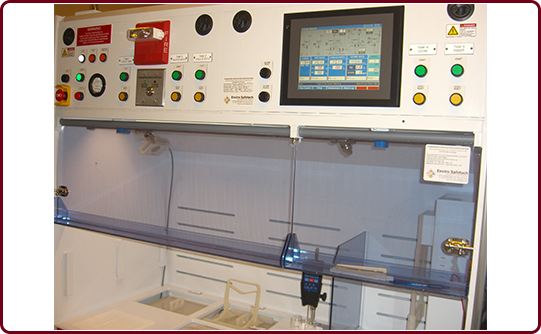
Precautions: Ozone is a strong oxidizer and should only be used at low concentrations. Proper safety measures should be taken when working with ozone cleaning systems, such as exhaust ventilation, ozone detection sensors, and personal protective equipment.
Note: Specific ozone processing techniques and parameters may vary depending on the specific requirements of the semiconductor fabrication process and the type of contaminants being addressed. Semiconductor manufacturers often develop tailored ozone processing methodologies based on their needs and equipment capabilities.
Modutek’s years of experience working with ozone cleaning processes provides you with a comprehensive package of process control, safety, and throughput. Our complete line of automated, semi-auto, and manual wet bench stations allows us to design ozone process systems that meet your specifications within your budget constraints.
Generation: Ozone can be created using an ozone generator and passing high-purity oxygen gas through it and using electrical discharge to convert O2 molecules to O3.
Surface Cleaning: Ozone processing can be utilized to effectively clear semiconductor surfaces of various contaminants. It effectively eliminates organic residues such as photoresists, polymers, and oils, as well as inorganic contaminants like metal oxides and particles. When ozone reacts with these substances, it breaks them down into volatile byproducts that are easily removed.
Ozone Cleaning Systems: Ozone processing can be performed using specialized equipment called “ozone cleaning systems.” These systems typically consist of an ozone generator, gas delivery system, and reaction chamber, which houses the components being cleaned while sealed to prevent ozone leakage.
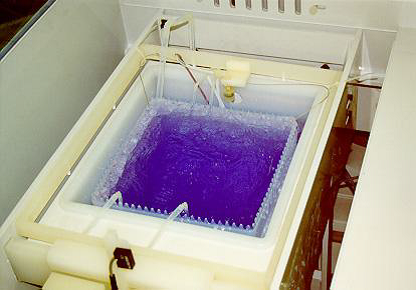
- Benefits
- Features
Benefits
- Low cost of ownership
- Eliminates solvent usage for some applications
- Multiple applications available
- Reduces the use of chemicals and operating costs
- User friendly
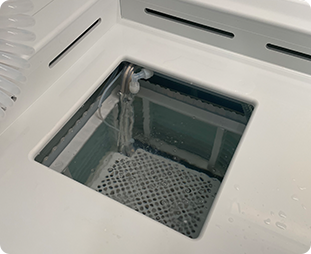
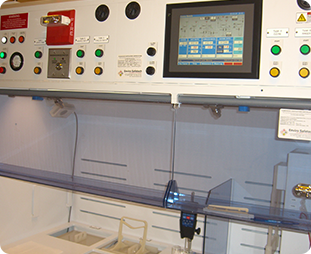
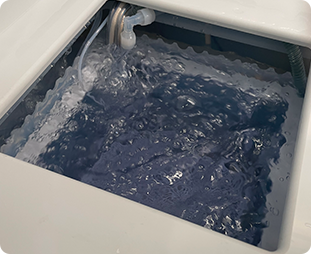
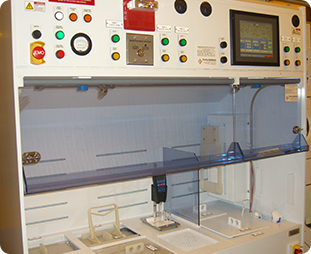
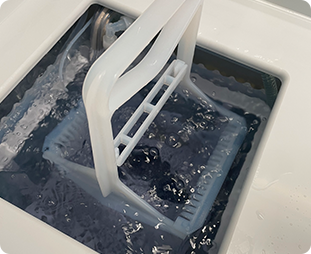
Features
- Designed around your process requirement.
- Engineered for automated throughput.
- All bath sizes available (manufactured in-house).
- All required safety features included
- Ambient processing available
- Dry to Dry automation available
- Easily designed into your new manual, semi-auto, or fully automated wet bench stations





- Benefits
- Standard Features
Benefits
- Low cost of ownership
- Eliminates solvent usage for some applications
- Multiple applications available
- Reduces the use of chemicals and operating costs
- User friendly





Features
- Designed around your process requirement.
- Engineered for automated throughput.
- All bath sizes available (manufactured in-house).
- All required safety features included
- Ambient processing available
- Dry to Dry automation available
- Easily designed into your new manual, semi-auto, or fully automated wet bench stations





Benefits
- Low cost of ownership
- Eliminates solvent usage for some applications
- Multiple applications available
- Reduces the use of chemicals and operating costs
- User friendly





Features
- Designed around your process requirement.
- Engineered for automated throughput.
- All bath sizes available (manufactured in-house).
- All required safety features included
- Ambient processing available
- Dry to Dry automation available
- Easily designed into your new manual, semi-auto, or fully automated wet bench stations





Modutek can customize ozone cleaning process into wet bench systems to support your requirements.

